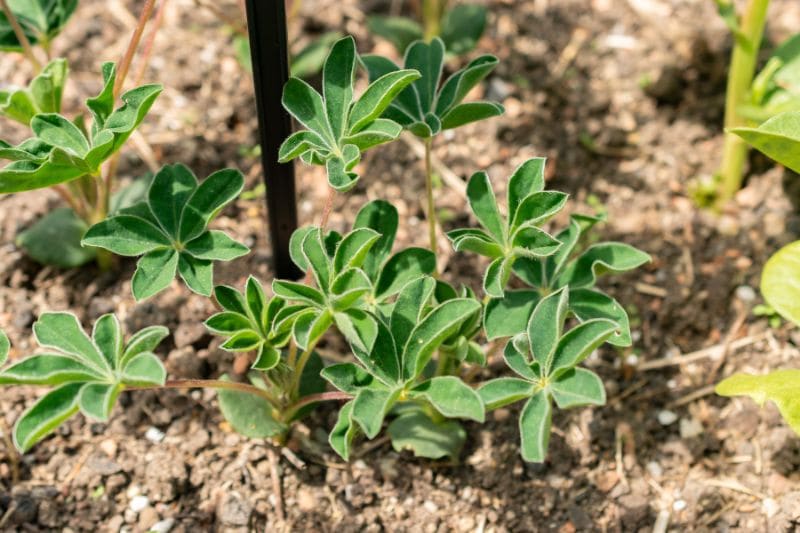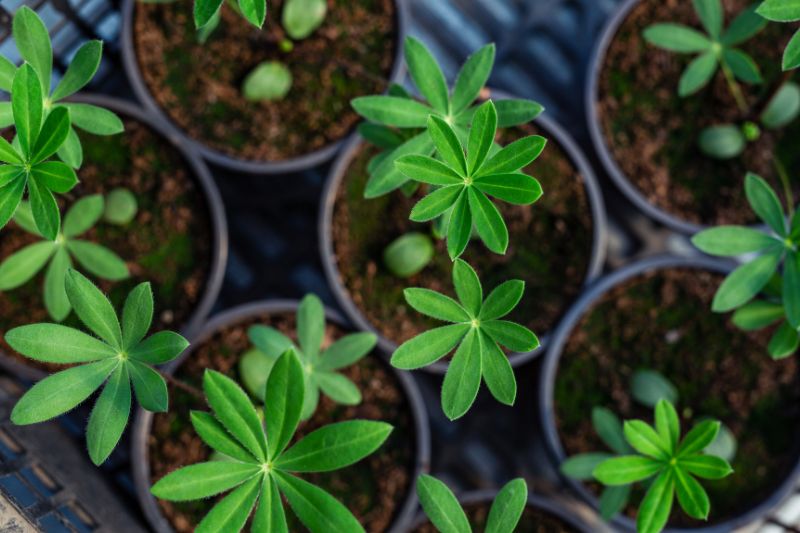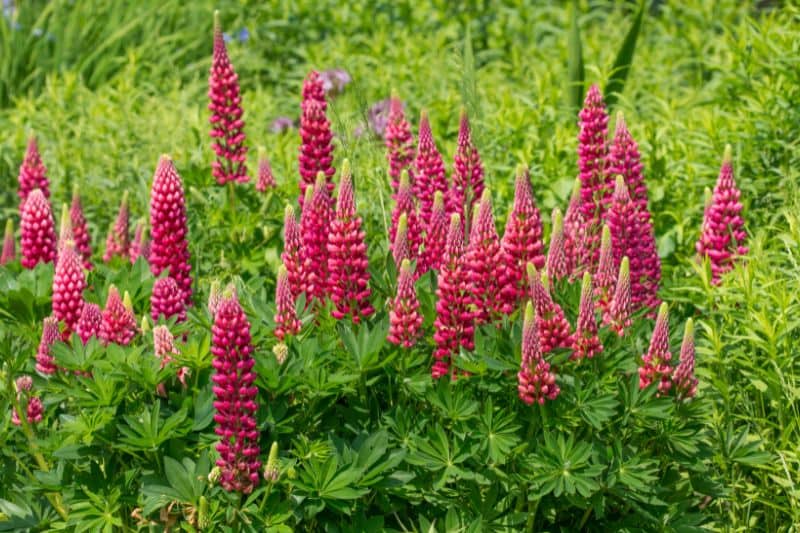The lupin, whether perennial or annual, is a prized ornamental plant for its stunning floral spikes in a variety of colours. Hardy and robust, it finds its place in flower beds, borders, or wildflower meadows alike. Easy to grow, lupins can be sown directly in the ground or in pots, depending on your climate. Discover how to sow lupins to enhance your garden and ensure their successful flowering.
Lupin, Who Are You?
The lupin belongs to the genus Lupinus, which includes over 200 species of plants in the Fabaceae family. It originates from temperate regions of North America, South America, and the Mediterranean basin.
There are two main types of lupins:
- Perennial lupins (Lupinus polyphyllus, Lupinus perennis, etc.): primarily used for their ornamental value, they return each year and enhance gardens with their colourful flower spikes. However, they contain alkaloids that can be toxic if ingested.
- Annual lupins (Lupinus mutabilis, Lupinus luteus, etc.): grown for their rapid growth. Some varieties are occasionally used as green manure or for animal and human consumption, as their seeds are rich in protein.
In this tutorial, we focus mainly on sowing perennial and ornamental lupins. These thrive in well-drained soil and sunny locations. Thanks to their taproot, lupins improve soil structure and enrich it with nitrogen, making them valuable for biodiversity and eco-friendly gardening.
Why Sow Lupins?
- Cost-effective: sowing allows you to obtain a large number of plants at a lower cost.
- Wide variety of choices: there is a broad range of varieties, from dwarf to tall cultivars, in various colours. Simply choose according to your preferences.
- Spectacular flowering: from May to July, their upright spikes in blue, pink, white, purple, or yellow immediately catch the eye and blend perfectly into flower beds or wild gardens.
- Melliferous plant: it attracts pollinating insects and promotes biodiversity.
- Perennial and hardy: this resilient plant returns each year. It tolerates cold well and adapts effortlessly to garden conditions.

When to Sow Lupins?
Perennial lupins are mainly sown in spring (March-May) or from late summer to early autumn (August-October).
- Spring sowing: Sow indoors from March to April, then outdoors from May once the risk of frost has passed. The plant will benefit from spring and summer to grow, with its first flowering typically occurring the following July.
- Autumn sowing: Ideal for regions with mild climates, autumn sowing results in early flowering the following summer.
How to Sow Perennial Lupins?
Required Materials
- Perennial lupin seeds
- Well-drained soil or a light substrate
- A rake and a hoe to prepare the soil
- Pots or a seed tray for container sowing
- A watering can with a fine rose to water without displacing the seeds
Step 1: Seed Preparation
Perennial lupin seeds have a hard coat that can slow germination. We recommend soaking the seeds in lukewarm water for 12 to 24 hours before direct sowing to speed up germination.
Step 2: Soil Preparation and Location Choice
If sowing directly in the ground, here are some tips:
- Exposure: choose a sunny or partially shaded spot.
- Soil type: lupins prefer light, well-drained soil, slightly acidic to neutral.
- Preparation: loosen the soil by digging and removing weeds. A small amount of well-decomposed compost can be helpful, but avoid overly nitrogen-rich soil, as lupins fix nitrogen themselves.
Step 3: Sowing Lupin Seeds in the Ground
- After preparing the soil (see above), place 3 seeds per hole (small indentation in the soil) at a depth of 1 cm and space them 30 to 40 cm apart to allow proper plant development.
- Cover with a thin layer of soil (1 cm) and lightly firm.
- Water lightly after sowing with rainwater. Use a watering can with a fine rose to avoid displacing the seeds.
- Monitor germination: it occurs within 10 to 20 days.

Sowing in Pots
- Fill the pots with a light, well-draining compost (a seed compost works perfectly).
- Place 2 to 3 seeds per pot to increase germination chances.
- Cover with a thin layer of compost (1 cm) and lightly firm.
- Water moderately and keep the substrate moist but not waterlogged until germination, which occurs within 10 to 20 days, depending on temperature.
- Place at a temperature of 15-20°C under shelter: in a greenhouse, under a cold frame, or indoors near a window.
- Transplant into the ground once the plants have 3 to 4 leaves.

After Sowing: Care and Maintenance
- Watering: Water regularly, but avoid waterlogging the soil or substrate.
- Manual weeding: Remove weeds around young plants to prevent root competition.
- Thinning: Keep the strongest plants, spacing them 30-40 cm apart.
- Monitor pests: Be vigilant, as aphids and especially slugs are very fond of young lupin shoots!
- Stake tall varieties if necessary.
- Winter protection: In winter, a mulch (hay, dead leaves, bark, etc.) can help protect the perennial plant.
- Harvest lupin seeds: To resow the following year, you can harvest and store your seeds. Note that seeds collected from your plants may differ in characteristics (colour, height) from the parent plant.
By following these gardening tips, you’ll enjoy beautiful flowering and robust plants suited to your garden!
To Learn More About Lupins
You can also read our articles:
- Lupins: 6 Ideas for Companion Planting
- How to Successfully Plant Lupins

































Comments